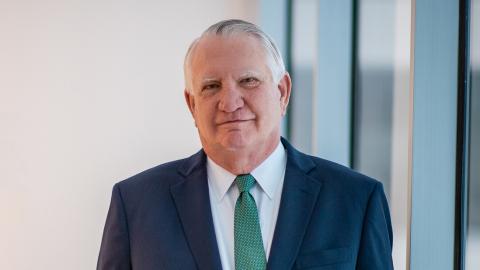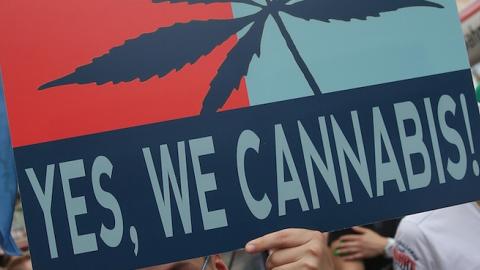President Obama this week told an audience in Jamaica that U.S. efforts against illegal drugs were “counterproductive” because they relied too much on incarceration—particularly for “young people who did not engage in violence.”
In what the president termed “an experiment … to legalize marijuana” in Colorado and Washington state, he said he believed they must “show that they are not suddenly a magnet for additional crime, that they have a strong enough public health infrastructure to push against the potential of increased addiction.”
In regard to Jamaica and the entire Caribbean and Central American region, he said, “a lot of folks think … if we just legalize marijuana, then it’ll reduce the money flowing into the transnational drug trade, there are more revenues and jobs created.”
To some of us, Jamaica hardly seems an auspicious location for encouraging “experimentation” with drugs, in particular because of the challenges already faced by their deficient institutions of public health and criminal justice. The U.S. Department of State 2015 International Narcotics Control Strategy Report (INCSR states:
Jamaica remains the largest Caribbean supplier of marijuana to the United States and local Caribbean islands. Although cocaine and synthetic drugs are not produced locally, Jamaica is a transit point for drugs trafficked from South America to North America and other international markets. In 2014, drug production and trafficking were enabled and accompanied by organized crime, domestic and international gang activity, and police and government corruption. Illicit drugs are also a means of exchange for illegally-trafficked firearms entering the country, exacerbating Jamaica’s security situation.
Drugs flow from and through Jamaica by maritime conveyance, air freight, human couriers, and to a limited degree by private aircraft. Marijuana and cocaine are trafficked from and through Jamaica into the United States, Canada, the United Kingdom, Belgium, Germany, the Netherlands, and other Caribbean nations. Jamaica is emerging as a transit point for cocaine leaving Central America and destined for the United States, and some drug trafficking organizations exchange Jamaican marijuana for cocaine. . . .
The conviction rate for murder was approximately five percent, and the courts continued to be plagued with a culture of trial postponements and delay. This lack of efficacy within the criminal courts contributed to impunity for many of the worst criminal offenders and gangs, an abnormally high rate of violent crimes, lack of cooperation by witnesses and potential jurors, frustration among police officers and the public, a significant social cost and drain on the economy, and a disincentive for tourism and international investment.
This does not seem like a place where “legal” marijuana would contribute to “reduced money flow” to the transnational drug trade, or “create jobs.” The president apparently thinks Jamaica should consider allowing more drugs, based on a faulty understanding of what is actually happening in Jamaica and in the U.S.
His charge of high incarceration rates for non-violent offenders is not factual. For instance, data show that only a fraction of one percent of state prison inmates are low-level marijuana possession offenders, while arrests for marijuana and cocaine/heroin possession and use were no more than 7 percent of all arrests, nationwide, in 2013.
Though critics of drug laws claim that hundreds or even thousands of prisoners are low-level non-violent offenders unjustly sentenced, the reality was shown recently by the President’s inability to find more than a handful of incarcerated drug offenders who would be eligible for commutation of their sentence because they fit the mythological portrait of excessive or unjust drug sentences.
Further, since 2007, the US is currently experiencing a surge in daily marijuana use, an epidemic of heroin overdose deaths (with minorities hardest hit), while the southwest border is flooded with heroin and methamphetamine flow, as shown by skyrocketing border seizures.
Importantly, Colorado, following marijuana “legalization,” has become a black-market magnet, and is currently supplying marijuana, including ultra-high-potency “shatter” to the rest of the U.S., leading to law suits by adjacent states. Legalization has not reduced criminal activity nor the threat of financial corruption.
As for Central America, Obama’s policies have shown stunning neglect. Actual aid for counter-drug activities, and for resources for interdicting smugglers have all diminished, while the countries of Central America have become battlegrounds for Mexican cartels, with meth precursors piling up at the docks, the cocaine transiting Venezuela to Honduras is surging, and violence is at an all-time high, with families fleeing north in unprecedented numbers. The Caribbean/Central American region has become deeply threatened, as noted by the State Department report above—torn apart by drug crime.
In this context the president encourages governments in the region to make drugs more acceptable and more accessible in their communities, and with even greater legal impunity?
Moreover, these developments have been accompanied by a steady drumbeat of medical science reports increasingly showing the serious dangers of marijuana use, especially for youth.
Yet President Obama speaks in a manner increasingly disconnected from the domestic and international reality of the drug problem.

















